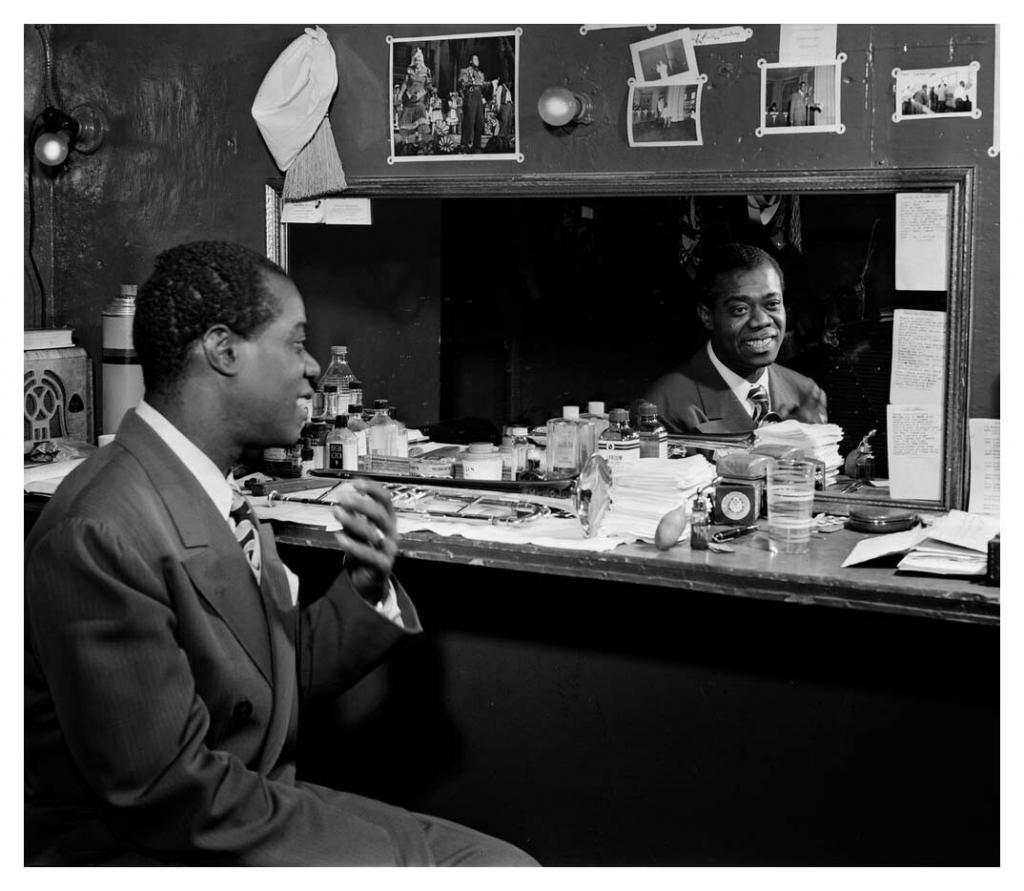I confess it: I was not raised on jazz. My earliest memories have a soundtrack of fifties and sixties music, and my dance education began by wiggling to Elvis Presley and twisting with Sam Cooke. I didn’t get around to jazz until my late teens, when I stumbled upon lindy hop toward the end of high school. While I regarded the dance as more of a fun hobby than an all-consuming passion, I was interested enough to get to know its music.
My first investigations in jazz were courtesy of the local public library, where I rented CDs and ripped them illegally (may the music gods forgive me) to my fancy new college-bound laptop. I checked out every Louis Armstrong CD in the district, primarily because I had loved his cameos in High Society, but also because his voice made me smile.
One CD, its name completely gone from my memory but which must have been a collection of Armstrong’s recordings from films, included “Basin Street Blues.” I remember my enchantment at the picture Jack Teagarden painted of that unique street down in “the land of dreams.” Jazz music, swing dance, and the world these arts presented to me was quickly becoming my “heaven on earth.” And one primary reason for their appeal is contained in the song’s lyric that struck me most: jazz and swing seemed to be the cultural place “where dark and light always meet.”
For a restless white 18-year-old raised in a racially homogenous Denver suburb, my understandings of race relations came primarily from history books. I knew that slavery and racial discrimination were incorporated into the practices of our territory long before an American identity had formed, that they continued through our country’s founding, that it took a bloody civil war to end slavery, and a centuries-long struggle for black Americans to achieve minimal human rights.
I hadn’t imagined that decades before Martin Luther King Jr. had a dream, Jazz music had melded the artistic contributions of white European traditions (marches and classical music) with African-American traditions (blues and ragtime), or that African-American dancers had blended elements of European dances with African movement to create lindy hop on the floor of the racially integrated Savoy Ballroom. It inspired me endlessly to learn that Jazz was the product of bringing together diverse traditions that had such a tense history of conflict.
To be fair, the history of jazz, like the history of our country, is riddled with inequality, appropriation, segregation and all manner of other injustices. In the 13 years that I’ve been swing dancing and exploring the world beyond my hometown, I’ve learned that my idealism (in jazz and other areas) must take into account people’s real experiences–especially people from marginalized segments of society.
Though jazz music was a combination of black and white traditions, black and white jazz musicians still experienced vastly different Americas. But exposure to each other always narrows the gulf of understanding between different peoples, and over the decades, the proximity of white and black musicians to each other and their shared musical passion has made jazz music a space where people of different races advocate for each other’s rights and vouch for each other’s humanity.
The 2016 election is over. It left in its wake a nation deeply divided between heartbreak and jubilance, fear and relief. Trump’s language on the campaign trail, especially as regards minorities and women, caused considerable alarm, and there are many who dread the prospect of a Trump presidency.
Others maintain that campaign rhetoric is by nature inflammatory. They insist that Donald Trump the president will be much more moderate than Donald Trump the candidate, that he will not follow through on his promises to (for example) divide immigrant families, or to register and track U.S. citizens based on their religion. Trump may maintain the more tolerant, conciliatory tone he has adopted since November 9. As we prepare for his inauguration, each citizen will decide for him or herself whether to view our 45th president with faith or suspicion, and will act accordingly.
But in this rancorous political moment, though we do not agree on the best candidate to lead us, there are still core American values that we share. Jazz music, dubbed American “folk music,” exemplifies the ways in which we as a nation benefit from embracing diversity. In jazz, elements from diverse traditions don’t vie for dominance; they support each other and blend together to write a more colorful American story. Our artistic gift to the world has been incorporated into musical traditions around the globe, but at its heart, it is a product of a quintessentially American value: that we celebrate the richness our different viewpoints, histories, and traditions offer each other.
We jazz enthusiasts can remind our countrymen and the world that our cherished and uniquely American music could never have come forth without diverse peoples and cultures being able to coexist. If tolerance as an American virtue is under threat, it is for each of us to defend it, to stand up for each other’s rights, and remind the world what has always made America—musically and otherwise—truly great.
Stephanie Robinson lives in Manhattan and is active in the NYC swing dance community.





















